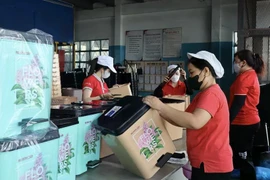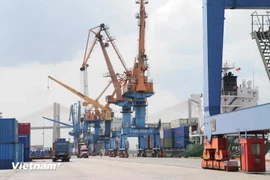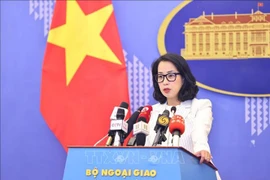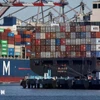HCM City (VNS/VNA) - Economists and business leaders are raising concerns over the US announcement to impose a 46% reciprocal tariff on Vietnamese goods starting April 9, warning of potential negative impacts on the country’s exports and overall economic growth.
Michael Kokalari, Chief Economist at VinaCapital, described the April 2 announcement of ‘reciprocal tariffs’ as “completely unexpected”. “Based on our analysis, these tariffs will make it difficult for Vietnam to achieve its 8% GDP growth target,” he said.
Markets had anticipated a tariff of around 10%, and VinaCapital had forecast an even lower figure. Kokalari noted that such a high rate runs counter to US interests and may trigger inflationary pressure that could influence upcoming midterm elections.
The 46% tariff figure is based on the US Council of Economic Advisors (CEA) claim that Vietnam imposes a 90% tariff on US imports - a figure derived from a simplistic analysis of the bilateral trade deficit.
However, the US Trade Representative (USTR) contradicted this claim in a report published on April 1, stating that “the majority of US exports to Vietnam face tariffs of 15% or less”. Analyses from Bloomberg and other sources also suggest that Vietnam’s average tariffs on US imports are only about 7 percentage points higher than US tariffs on Vietnamese imports. When adjusted for trade-weighted flows, the two countries’ effective import taxes are roughly equivalent.
Kokalari emphasised that the President Donald Trump administration seems to have based its entire trade and tariff strategy – or at least its entire opening negotiation position – on the numerical trade balances.
“It is extremely urgent for Vietnam to immediately start importing a lot more from the US,” he stressed.
“We have heard from secondary sources that Trump administration officials appreciate the initial efforts Vietnam is making to cooperate with efforts to reduce the numerical trade balance between the two countries, but US trade officials will not be assuaged by promises to make purchases at some future date,” he said.
He added that executives in the energy sector have indicated Vietnam could begin importing up to 35 billion USD worth of liquefied natural gas (LNG) annually by using floating storage regasification units (FSRUs) ships, as building permanent LNG terminals would take years.
Trade experts believe the 46% tariff represents an opening position for negotiations, with intense discussions expected between the two countries in the coming weeks. However, there is little consensus on what the final rate might be. Given how high this initial negotiating position is, it is hard to see a final figure of anything less than 25%, which would represent a material hit to Vietnam’s GDP growth.
Market impact
Kokalari said the announcement shocked investors, sending the VN-Index plunging nearly 7%. But the selling was fairly uniform across-the-board, indicating that market participants will need more time and information to digest the likely impact of all of this on the economy and earnings growth. Even companies not directly affected by tariffs, such as IT outsourcing giant FPT, saw their shares drop by the daily limit of 7%.
He noted that the reaction in the currency market was relatively muted, with the USD/VND exchange rate depreciating by less than 1% on the day, and by less than 2% year-to-date.
Historically, currencies of countries targeted by tariffs tend to depreciate by about half the tariff amount, he said, citing examples from Mexico during Trump’s first term. However, many tariff details remain unclear, including potential exemptions for specific Vietnamese exports.
Despite the uncertainty, some investment funds see opportunities.
“We are currently assessing the impact of the tariffs on the scenarios we have in place for our various portfolios and are looking for buying opportunities to take advantage of any short-term weakness against the backdrop of the potential longer-term impact on both the Vietnam and global economies,” Kokalari said. “The sell-off gives active fund managers an opportunity to buy stocks that are fundamentally sound and will not be overly impacted by the tariffs at cheaper valuations.”
Shock to key export sectors
Vietnam’s top export sectors, including textiles and garments, electronics, footwear, seafood, and furniture, rely heavily on the US market. The proposed tariffs represent a shock, and businesses are urging the Government to negotiate for a more reasonable rate.
Pham Xuan Hong, Chairman of the Ho Chi Minh City Association of Garment, Textile, Embroidery, and Knitting (Agtek), highlighted that the US accounts for 40% of the industry’s total exports.
Currently, Vietnamese textile and garment products exported to the market are subject to a 16% tax. If an additional 46% is imposed, they will be unable to compete, he said.
Agtek members hope that the strong bilateral relationship and negotiation efforts from the Vietnamese Government will help reduce the proposed tariff rate. In the meantime, businesses will continue to diversify their markets to reduce their dependence on the US market, he said.
Nguyen Dinh Tung, Vice Chairman of the Vietnam Fruit and Vegetable Association and general director of Vina T&T Group, noted that most Vietnamese fruit and vegetable exports to the US currently face minimal tariffs, except frozen durian, which is taxed at 16%.
He warned that higher tariffs could undermine the competitiveness of Vietnamese produce, prompting US importers to shift to suppliers in countries like Thailand.
The woodworking industry faces similar risks.
Ngo Sy Hoai, Vice Chairman and General Secretary of the Vietnam Timber and Forest Product Association, described the new tax as “terrifying”, adding that the industry is still reeling from the news. He expressed hope that Vietnam will soon begin formal negotiations to address the issue./.
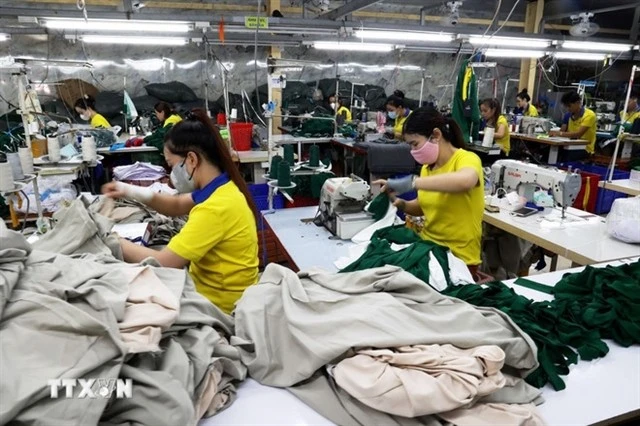
See more
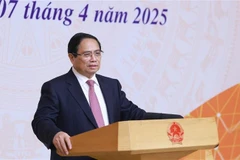
Prime Minister chairs meeting discussing measures to adapt to changes in int'l trade
PM Chinh affirmed that adversity has always reinforced Vietnam’s resilience and resourcefulness, enabling the country to overcome obstacles and adapt effectively to global shifts.

VCCI, AmCham call on US to delay new reciprocal tariffs on Vietnam's exports
In their joint letter sent to the US Secretary of Commerce, VCCI and AmCham called on the Trump administration to temporarily suspend the imposition of tariffs to avoid disrupting business operations, negatively affecting current trade transactions, and disturbing the logistics chain.
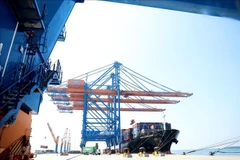
Flexible solutions needed to adapt to US new tariff policy: Official
Hoai said the US's proposed reciprocal tariff of 46% on imports from Vietnam can have significant and multifaceted impacts on the Southeast Asian country’s exports and economic growth in the near future.
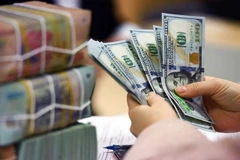
Foreign exchange rate to remain under control in wake of US tariff
According to experts, to minimise exchange rate risks, the SBV should manage the rate flexibly, but not fix or anchor it because Vietnam's economy is deeply integrating towards it becoming a market economy, which requires flexibility.
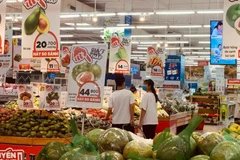
CPI rises 3.22%, inflation remains under control in Q1
The Government has implemented numerous measures to keep market prices stable and inflation under control.
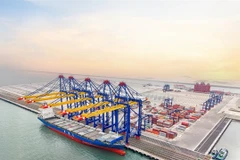
Hai Phong inaugurates 73ha-smart port
The launch of the Hateco Hai Phong International Container Terminal (HHIT) represents a significant milestone in Vietnam’s maritime development, boosting international trade and driving economic growth not only in the northern region but across the nation.
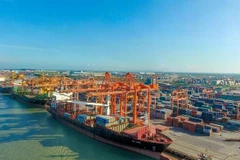
Vietnam, Canada strengthen cooperation amidst global trade tensions
Quebec leaders expressed their determination to bolster comprehensive cooperation with Vietnam as part of Canada's strategy to diversify markets and reduce its dependence on the US market.

Vietnam posts trade surplus of 3.16 billion USD in Q1
In March alone, the total trade revenue reached 75.39 billion USD, up 18.2% compared to the previous month, and 16.6% year-on-year.

PM calls for flexible response to US tariffs, maintaining 8% growth target
Prime Minister Pham Minh Chinh emphasised that Vietnam will not change its target of achieving economic growth of 8% or higher this year, while simultaneously maintaining macroeconomic stability, ensuring social welfare, and improving people's livelihoods.
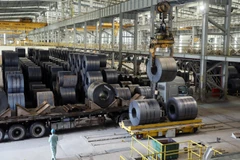
Vietnam's GDP expands by 6.93% in Q1
The agro-forestry-fishery, industry-construction, and service sectors expanded by 3.74%, 7.42% and 7.7%, contributing 6.09%, 40.17%, and 53.74% to the total GDP expansion during January–March, respectively.
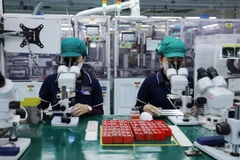
FDI inflow into Vietnam rises 34.7% in Q1
This growth is driven by several factors, including a sharp increase in additional investment to existing projects, capital contribution, and share purchases.
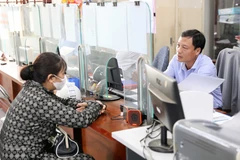
Public satisfaction with administrative services improves further: conference
The 2024 PAR Index achieved its highest average value to date – at 88.37%, up 1.39% from 2023, with all the 63 provinces and centrally-run cities scoring above 80%.

FDI predicted to flow strongly into high-value technology sectors
Vietnam is emerging as an attractive destination for investors in science and technology, especially semiconductors, largely due to high-quality human resources at competitive cost, upgraded infrastructure, increasingly open and transparent policies, and high political determination of Party and State leaders.

RCEP agreement marks three years of advancing regional trade cooperation
Currently, the agreement covers a market of approximately 2.3 billion people, representing around 30% of the global population and GDP. Notably, five of its 15 members are members of the G20.

Vietnam provides updates on rules of origin at WTO
Through Hien’s remarks, WTO members appreciated Vietnam’s proactive and responsible role in promoting cooperation among member states and enhancing transparency in meeting its notification obligations under WTO regulations.
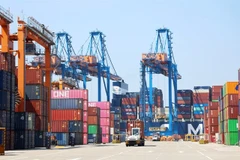
AmCham proposes US postpone reciprocal tariffs on Vietnam's goods
While AmCham acknowledges the need to address the growing trade deficit between the two nations, it strongly urges the US administration to consider implementing a grace period.
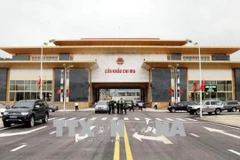
Goods flows via Lang Son’s Chi Ma border gate surge
This is reflected in the customs revenue at the border gate, which exceeded 200 billion VND (7.75 million USD), accounting for 35% of the annual budget target for 2025 and 6% higher than that of the same period in 2024.

Lao Cai-Hanoi-Hai Phong railway hoped to boost Vietnam’s 2nd largest economic corridor
The railway will be newly constructed with the goal of connecting to the Hai Phong international seaport and facilitating multimodal transport with China, says Nguyen Khanh Tung, Deputy Director of the Railway Project Management Board under the Ministry of Construction.
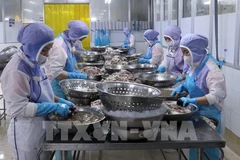
UOB Vietnam backs NAVICO in green finance push for aquaculture
The partnership builds on prior collaboration, with UOB Vietnam previously funding NAVICO’s installation of rooftop solar power systems at its aquaculture facilities.
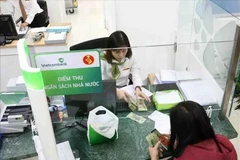
State budget revenue rises 9.7% in Q1
To meet the 2025 revenue target of 411 trillion VND, a 9.6% rise from 2024, the department has instructed regional customs offices to implement measures to boost revenue tailored to local conditions while preventing budget losses.
